Citizenship USA Nationality American | Name Richard Lewontin Role Evolutionary Biologist | |
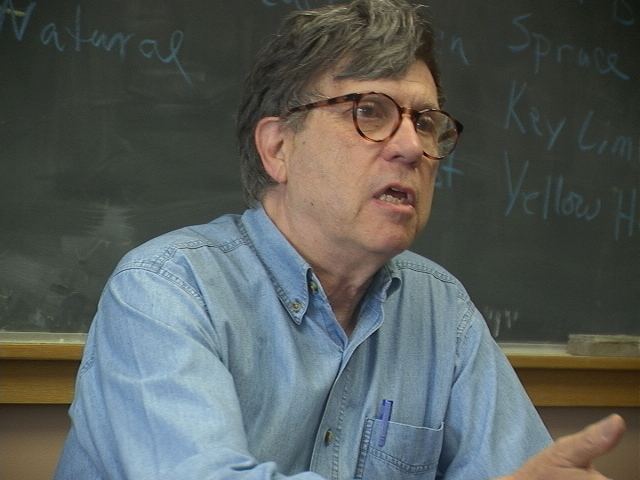 | ||
Institutions Harvard University, North Carolina State University, University of Rochester, University of Chicago, Columbia University Thesis The Effects of Population Density and Composition on Viability in Drosophila melanogaster (1955) Education Columbia University (1952–1954), Harvard University (1947–1951), Ecole libre des hautes etudes Awards Guggenheim Fellowship for Natural Sciences, US & Canada Books Biology as ideology, The triple helix, Not in Our Genes, The dialectical Biologist, The Doctrine of DNA: Biol Similar People | ||
Gene organism and environment with richard lewontin
Richard Charles "Dick" Lewontin (born March 29, 1929) is an American evolutionary biologist, geneticist, academic and social commentator. A leader in developing the mathematical basis of population genetics and evolutionary theory, he pioneered the application of techniques from molecular biology, such as gel electrophoresis, to questions of genetic variation and evolution.
Contents
- Gene organism and environment with richard lewontin
- The concept of race with richard lewontin
- Early life and education
- Work in population genetics
- Work on human genetic diversity
- Critique of mainstream evolutionary biology
- Sociobiology and evolutionary psychology
- Agribusiness
- Personal life
- Recognition
- References
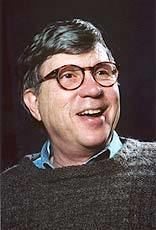
In a pair of seminal 1966 papers co-authored with J.L. Hubby in the journal Genetics, Lewontin helped set the stage for the modern field of molecular evolution. In 1979 he and Stephen Jay Gould introduced the term "spandrel" into evolutionary theory. From 1973 to 1998, he held an endowed chair in zoology and biology at Harvard University, and since 2003 has been a research professor there.
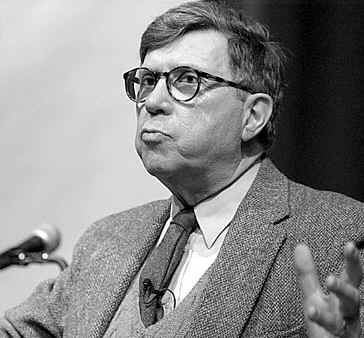
Lewontin opposes genetic determinism.
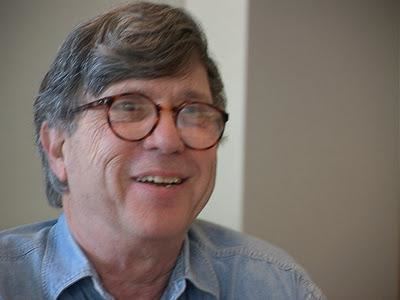
The concept of race with richard lewontin
Early life and education
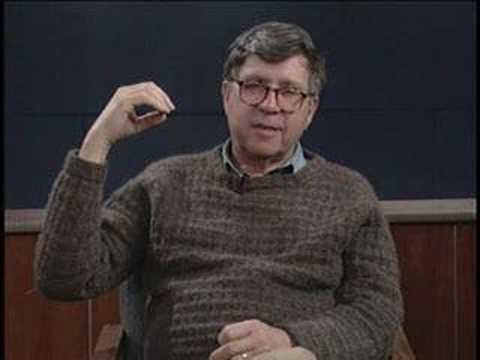
Lewontin was born in New York City to parents descended from late 19th-century Eastern European Jewish immigrants. He attended Forest Hills High School and the École Libre des Hautes Études in New York. In 1951 he graduated from Harvard College (BS, biology). In 1952, Lewontin received a master's degree in mathematical statistics, followed by a doctorate in zoology in 1954, both from Columbia University, where he was a student of Theodosius Dobzhansky.
He held faculty positions at North Carolina State University, the University of Rochester, and the University of Chicago. In 1973 Lewontin was appointed as Alexander Agassiz Professor of Zoology and Professor of Biology at Harvard University, holding the position until 1998.
Work in population genetics
Lewontin has worked in both theoretical and experimental population genetics. A hallmark of his work has been an interest in new technology. He was the first person to do a computer simulation of the behavior of a single gene locus (previous simulation work having been of models with multiple loci). In 1960 he and Ken-Ichi Kojima were the first population geneticists to give the equations for change of haplotype frequencies with interacting natural selection at two loci. This set off a wave of theoretical work on two-locus selection in the 1960s and 1970s. Their paper gave a theoretical derivation of the equilibria expected, and also investigated the dynamics of the model by computer iteration. Lewontin later introduced the D' measure of linkage disequilibrium. (He also introduced the term "linkage disequilibrium", about which many population geneticists have been unenthusiastic.)
In 1966, he and Jack Hubby published a paper that revolutionized population genetics. They used protein gel electrophoresis to survey dozens of loci in the fruit fly Drosophila pseudoobscura, and reported that a large fraction of the loci were polymorphic, and that at the average locus there was about a 15% chance that the individual was heterozygous. (Harry Harris reported similar results for humans at about the same time.) Previous work with gel electrophoresis had been reports of variation in single loci and did not give any sense of how common variation was.
Lewontin and Hubby's paper also discussed the possible explanation of the high levels of variability by either balancing selection or neutral mutation. Although they did not commit themselves to advocating neutrality, this was the first clear statement of the neutral theory for levels of variability within species. Lewontin and Hubby's paper had great impact—the discovery of high levels of molecular variability gave population geneticists ample material to work on, and gave them access to variation at single loci. The possible theoretical explanations of this rampant polymorphism became the focus of most population genetics work thereafter. Martin Kreitman was later to do a pioneering survey of population-level variability in DNA sequences while a Ph.D. student in Lewontin's lab.
Work on human genetic diversity
In a landmark paper, in 1972 Lewontin identified that most of the variation (80–85%) within human populations is found within local geographic groups and differences attributable to traditional "race" groups are a minor part of human genetic variability (1–15%). In a 2003 paper, A.W.F. Edwards criticized Lewontin's conclusion that race is an invalid taxonomic construct, terming it Lewontin's fallacy. He argued that the probability of racial misclassification of an individual based on variation in a single genetic locus is approximately 30% and the misclassification probability becomes close to zero if enough loci are studied.
Critique of mainstream evolutionary biology
In 1975, when E. O. Wilson's book Sociobiology proposed evolutionary explanations for human social behaviors, a number of biologists responded negatively, including Lewontin, Stephen Jay Gould, Ruth Hubbard, and others.
Lewontin and his Harvard colleague Stephen Jay Gould introduced the term spandrel to Evolutionary biology, inspired by the architectural term "spandrel", in an influential 1979 paper, "The spandrels of San Marco and the Panglossian paradigm: a critique of the adaptationist programme." "Spandrels" were described as features of an organism that exist as a necessary consequence of other (perhaps adaptive) features, but do not directly improve fitness (and thus are not necessarily adaptive). The relative frequency of spandrels versus adaptations continues to stir controversy in evolutionary biology.
Lewontin was an early proponent of a hierarchy of levels of selection in his article, "The Units of Selection". He has been a major influence on philosophers of biology, notably William C. Wimsatt (who taught with Lewontin and Richard Levins at the University of Chicago), Robert Brandon and Elisabeth Lloyd (who studied with Lewontin as graduate students), Philip Kitcher, Elliott Sober, and Sahotra Sarkar. Lewontin briefly argued for the historical nature of biological causality in "Is Nature Probable or Capricious?".
In "Organism and Environment" in Scientia, and in more popular form in the last chapter of Biology as Ideology, Lewontin argued that while traditional Darwinism has portrayed the organism as a passive recipient of environmental influences, a correct understanding should emphasize the organism as an active constructor of its own environment. Niches are not pre-formed, empty receptacles into which organisms are inserted, but are defined and created by organisms. The organism-environment relationship is reciprocal and dialectical. M.W. Feldman, K.N. Laland, and F.J. Odling-Smee, among others, have developed Lewontin's conception in more detailed models under the term "niche construction".
In the adaptationist view of evolution, the organism is a function of both the organism and environment, while the environment is only a function of itself. The environment is seen as autonomous and unshaped by the organism. Lewontin instead believed in a constructivist view, in which the organism is a function of the organism and environment, with the environment being a function of the organism and environment as well. This means that the organism shapes the environment as the environment shapes the organism. The organism shapes the environment for future generations.
Lewontin has long been a critic of traditional neo-Darwinian approaches to adaptation. In his article "Adaptation" in the Italian Enciclopedia Einaudi, and in a modified version for Scientific American, he emphasized the need to give an engineering characterization of adaptation separate from measurement of number of offspring, rather than simply assuming organs or organisms are at adaptive optima. Lewontin has said that his more general, technical criticism of adaptationism grew out of his recognition that the fallacies of sociobiology reflect fundamentally flawed assumptions of adaptiveness of all traits in much of the modern evolutionary synthesis.
Lewontin accused neo-Darwinists of telling Just-So Stories when they try to show how natural selection explains such novelties as long-necked giraffes.
Sociobiology and evolutionary psychology
Along with others, such as Gould, Lewontin has been a persistent critic of some themes in neo-Darwinism. Specifically, he has criticised proponents of sociobiology and evolutionary psychology such as Edward O. Wilson and Richard Dawkins, who attempt to explain animal behaviour and social structures in terms of evolutionary advantage or strategy. He and others criticize this approach when applied to humans, as he sees it as genetic determinism. In his writing, Lewontin suggests a more nuanced view of evolution is needed, which requires a more careful understanding of the context of the whole organism as well as the environment.
Such concerns about what he views as the oversimplification of genetics has led Lewontin to be a frequent participant in debates, and an active life as a public intellectual. He has lectured widely to promote his views on evolutionary biology and science. In books such as Not in Our Genes (co-authored with Steven Rose and Leon J. Kamin) and numerous articles, Lewontin has questioned much of the claimed heritability of human behavioral traits, such as intelligence as measured by IQ tests.
Some academics have criticized him for rejecting sociobiology for non-scientific reasons. Edward Wilson (1995) suggested that Lewontin's political beliefs affected his scientific view. Lewontin has at times identified himself as Marxist, and admitted that his ideological views have affected his scientific work (Levins and Lewontin 1985). Others such as Kitcher (1985) have countered that Lewontin's criticisms of sociobiology are genuine scientific concerns about the discipline. He wrote that attacking Lewontin's motives amounts to an ad hominem argument. Robert Trivers described Lewontin as "...a man with great talents who often wasted them on foolishness, on preening and showing off, on shallow political thinking and on useless philosophical rumination while limiting his genetic work by assumptions congenial to his politics."
Agribusiness
Lewontin has written on the economics of agribusiness. He has contended that hybrid corn was developed and propagated not because of its superior quality, but because it allowed agribusiness corporations to force farmers to buy new seed each year rather than plant seed produced by their previous crop of corn. Lewontin testified in an unsuccessful suit in California challenging the state's financing of research to develop automatic tomato pickers. This favored the profits of agribusiness over the employment of farm workers.
Personal life
As of 2003, Lewontin was the Alexander Agassiz Research Professor at Harvard. He has worked with and had great influence on many philosophers of biology, including William C. Wimsatt, Elliott Sober, Philip Kitcher, Elisabeth Lloyd, Peter Godfrey-Smith, Sahotra Sarkar, and Robert Brandon, often inviting them to work in his lab. As of mid-2015, Lewontin and his wife Mary Jane live on a farm in Brattleboro, Vermont. He is an atheist.
